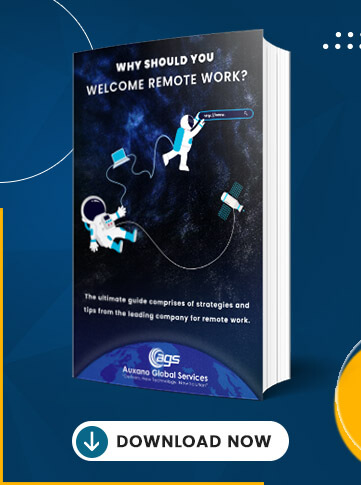Proof of concept, prototype, and MVP are the three pillars of a successful digital product. These pillars ensure that your software is a perfect product-market fit and is engineered with the best standards and practices. However, most tech entrepreneurs and startups are unaware of these terms.
This often results in differences in the product’s expectations and reality. Moreover, neglecting the importance of any of these pillars can be detrimental to your software. It, therefore, becomes essential to know what exactly a proof of concept, prototype, and minimal viable product is.
This blog will provide complete information on PoC vs. prototype vs. MVP and will help you understand these concepts in detail. By the end of the blog, you will be able to formulate a flawless system engineering strategy. Without further ado, let’s dive into the topic and understand what exactly each of these term mean.
What’s the Difference Between PoC, Prototype, and MVP?
Engineering a software can be a lengthy process and requires numerous complications. Overcoming these challenges requires following a well-refined system development life cycle. This lifecycle has numerous components, a few of which are PoC (Proof of Concept), MVP (Minimum Viable Product), and prototype.
We can segregate these components into pre-development and core development processes. While creating a PoC is a part of the pre-development process, prototyping, and MVP come under core software engineering.
In this section, we will understand the significance, use, and benefits of each of these terms. Make sure to read this section completely to thoroughly understand the difference between PoC vs. prototype vs. MVP. Let’s start with the first pillar, i.e., the Proof of Concept.
1. Proof of Concept (PoC)
A Proof of Concept, also known as a PoC, is a document hypothetically stating the technical viability of a software idea on paper. Creating a Proof of Concept requires thorough research on the software idea, its target market, competitors, and business goals.
Moreover, PoCs are useful not just for software development but for numerous business ideas. This is because every idea needs validation and verification before being implemented. By creating a PoC, you can stay assured that the further steps of the SDLC will yield profitable results for your business.
1.1 How Does a PoC Work?
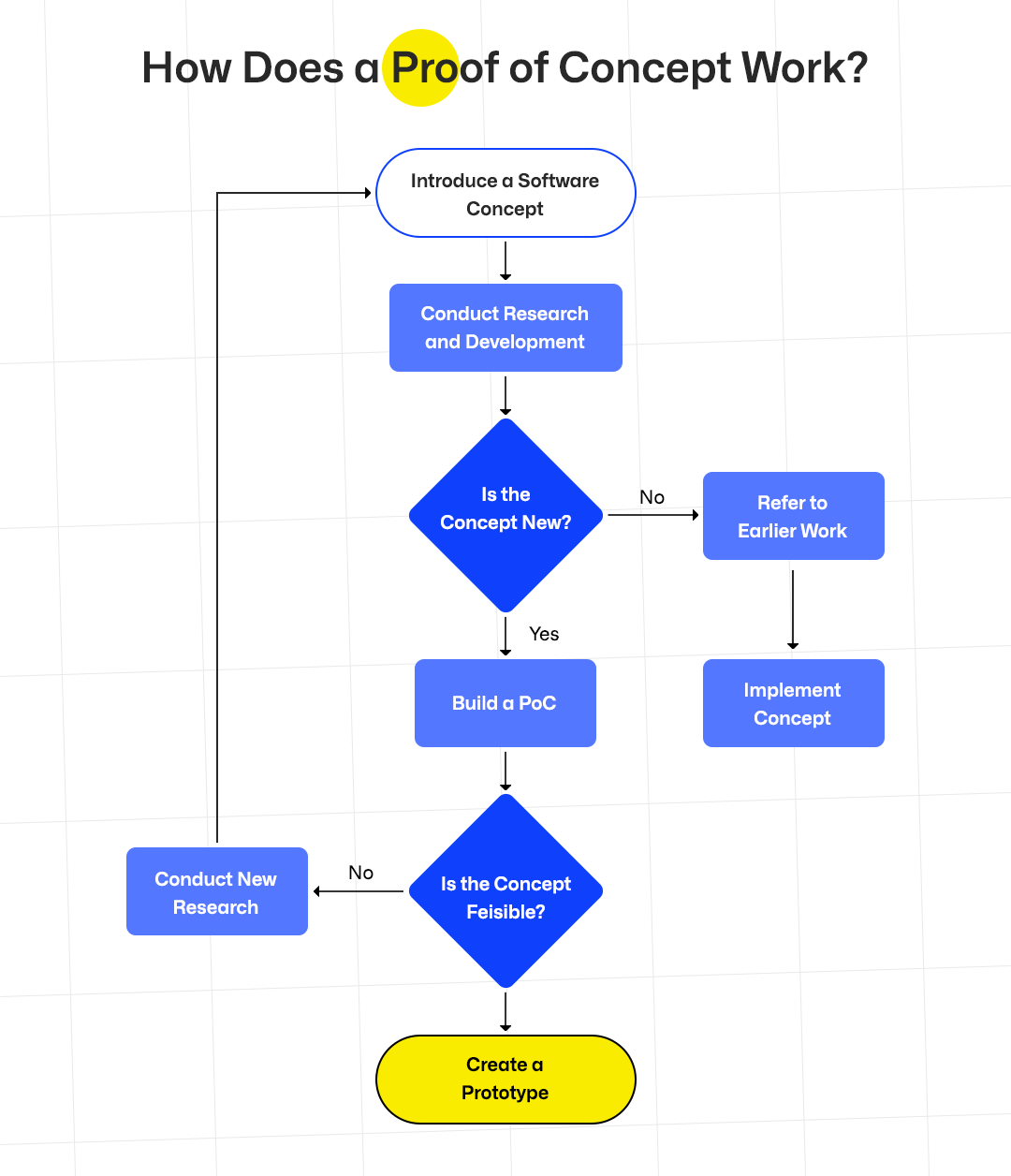
A PoC works by validating the technical requirements of a software product. This includes creating a rigid proof that the technologies, tools, and other resources allocated to the SDLC are going to work. More than often, a PoC is not just a document but a well-running program.
However, when programmed, a PoC focuses only on proving the feasibility of the idea’s core concepts. Therefore, a PoC may not be a visually appealing program but just a pilot run of the core software idea.
1.2 Types of PoC
There are four types of PoCs: technical PoC, business PoC, marketing PoC, and finance PoC. Each of these types provides validation on a certain aspect of a product.
You may or may not need all of these PoCs for your product, depending on the type of software you wish to develop. Moreover, for software projects with a complex architecture, you can create different technical PoCs to validate different parts of the product.
1.3 Benefits of PoC
There are numerous advantages to building a PoC. Some of the most noteworthy benefits of PoCs are:
- PoCs help project leaders anticipate potential risks and create an infallible mitigation strategy.
- A PoC can be useful for determining the technical loopholes and pitfalls of the upcoming software product. These loopholes can be addressed and rectified in the early stages.
- PoCs empower project leaders to create a product engineering strategy that aligns with the company’s goals and objectives.
Now that you know about PoC, let’s move forward with our discussion on PoC vs. Prototype vs. MVP. The coming section will shed light on prototyping.
2. Prototype
In simple words, a prototype is a visualized version of the final product. In software engineering, prototypes act as guides for core programming and help streamline business requirements with the final product.
On the front end, a prototype can function as well as a software. However, unlike software, prototypes do not have a back-end architecture or database management system. Therefore, while a prototype is excellent for understanding the visual look and feel of the final software, it cannot indicate its real performance.
2.1 How Does a Prototype Work?
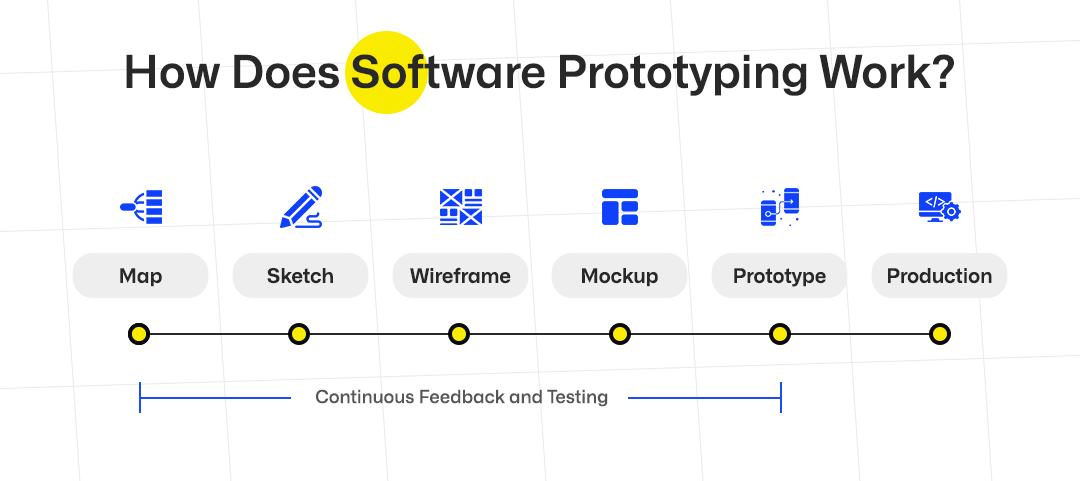
In terms of software engineering, prototyping involves creating a complete design of each and every screen of the product. Once designed, these screens are connected to each other, just like a finished software.
The stakeholders can use this software to assess the final product’s visual elements and understand the user journey. Through prototyping, the project leaders can make rectifications to any part of the software’s architecture. This is usually in regard to the software’s features and UI elements.
2.2 Types of Prototypes
There are numerous types of prototypes that you can build. Each of these prototypes has its own uses. Let’s discuss these types in detail.
A) Rapid Prototype
As the name suggests, rapid prototyping laser focuses on providing a quick visual overview of the software concept to the stakeholders. A rapid prototype takes only the initial product requirements into account and not the refined ones. These types of prototypes are usually discarded later and are not used in the final software product.
B) Evolutionary Prototype
An evolutionary prototype starts as a basic software mockup, which then evolves into a more advanced version. This evolution is usually based on the product’s feedback. The design team continuously works on this basic prototype and enriches it with new features and visual elements. An evolving prototype often ends up as an underlying MVP and is usually a part of the final software architecture.
C) Incremental Prototype
Incremental prototypes are used for prototyping complex software. In this type of prototyping, a product is broken down into smaller chunks, preferably in modules. These different prototypes are then merged to create the final product. Since each module works in a nuclear environment, there are no dependencies between the different prototyping teams.
D) Extreme Prototype
Generally speaking, extreme prototyping is used only for web development. Here, the prototyping team creates an HTML version of the design. An extreme prototype typically contains two layers: the presentation layer and the services layer.
The presentation layer is what the users see on their screens when using the web solution. The services layer is all the logic and back-end architecture of the website. As you may have understood, extreme prototyping converts the visual view to a fully functioning solution.
2.3 Benefits of Prototypes
Prototyping is one of the most overlooked yet essential stages in the SDLC. Here are some of the key benefits of software prototyping:
- Prototyping reduces the chances of surprises that may arise during the software development process.
- A prototype acts as a visual guide for the engineers to code the solution, ensuring optimal functionality and UI.
- Having a prototype ready for the final product can be excellent to attract investors.
- Prototyping helps ensure that the product’s visual version matches the theoretical version. This includes all the features and functionalities determined in the market research.
Now that we have gained detailed information on prototyping, let’s go ahead and understand the concept of MVP development. Doing so will help us understand the differences between PoC vs. prototype vs. MVP. This will be our topic for the coming section.
3. Minimal Viable Product (MVP)
An MVP is a basic version of software with only the most necessary features and functionalities. The exact scale and scope of your MVP depends on the type of software you wish to develop.
For example, the MVP version of a high-end software can be more complex than the full-scale versions of other software. Do note that, unlike PoCs and prototypes, MVPs are well-functioning programs with a complete front-end and back-end architecture.
Developing an MVP is useful for creating a solid foundation for the final product. Once an MVP succeeds, it can be upscaled into a larger product with more features and functionalities. Therefore, it is important to keep future scalability in mind when programming an MVP.
3.1 How Does an MVP Work?
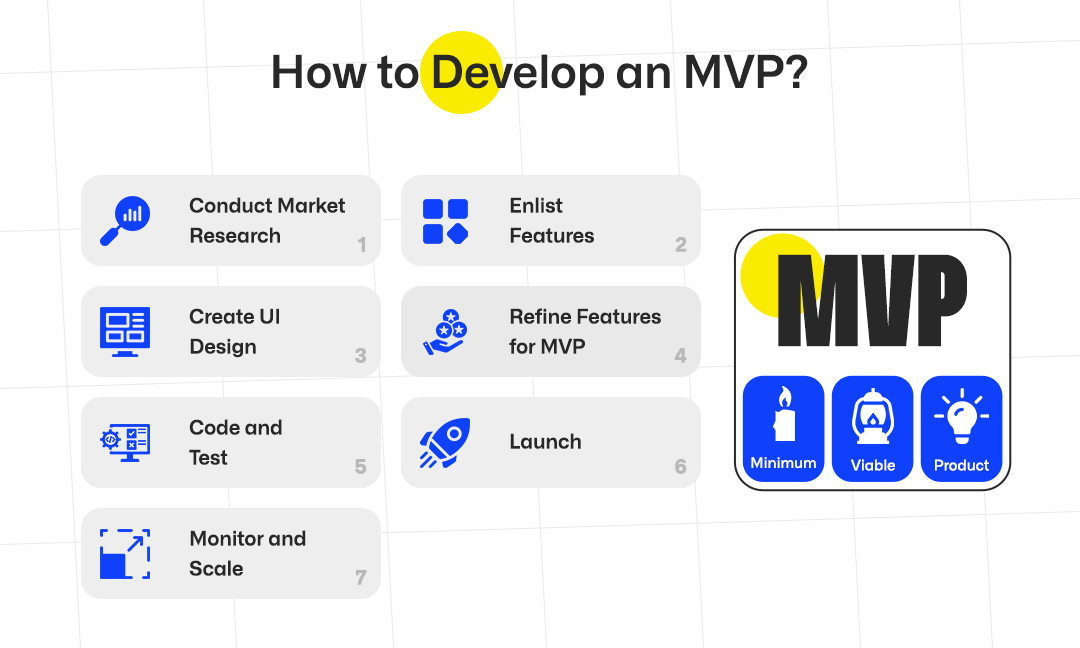
MVP is based on a slow-release approach, where project leaders primarily focus on developing only the most important features. A software with these basic features can then be released in the market and monitored for performance. Once the project leader is assured that the software is performing well in the market, they go ahead and build and release additional features.
MVPs are not just limited to software and can be useful for numerous other products. As long as your product has only the most basic functionalities and elements, it is considered an MVP. Moreover, it is important to note that MVPs, while having basic features, do not compromise the essential functionalities.
3.2 Types of MVP
There are mainly two types of MVPs in software engineering: low-fidelity MVPs and high-fidelity MVPs.
A) Low-fidelity MVP
A low-fidelity MVP is a trial version of the software. The purpose of this MVP is to discover market demand and understand user perception. Developing a low-fidelity MVP requires less time and effort. Some of the most common examples of low-fidelity MVPs are landing pages, forums, communities, blogs, etc.
B) High-fidelity MVP
A high-fidelity MVP is a relatively complex version of a low-fidelity MVP. The objective of creating a high-fidelity MVP is to analyze the market value of a product. These MVPs contain minimal features and are, therefore, easy to code.
Nevertheless, high-fidelity MVPs are great for testing the waters in the market and calculating your product’s success prospects.
3.3 Benefits of MVP
As we mentioned earlier, MVPs are a great medium for instant market access. However, there’s more to MVPs than that. A few other remarkable benefits of MVP development include:
- Creating a minimal viable product is excellent for gaining early bird access. This benefit is important in today’s rapidly evolving IT market.
- An MVP comes in handy to attract investors. These investors can get insights into the product’s idea, functionalities, vision, and UI.
- Most prototypes are evolutionary. You can simply add more code to the existing basic program to upscale your software. This eliminates the need to custom-code the program from scratch.
So far, we have thoroughly discussed the concepts, benefits, types, and uses of PoC (Proof of Concept), MVP (Minimum Viable Product), and Prototype. We hope that by now, you have all the information needed to understand the difference between PoC vs. Prototype vs. MVP. In the coming section, we will discuss the cost of creating each of these concepts.
Cost Factor: PoC vs. MVP vs. Prototype
Now that you know the difference between a proof of concept, prototype, and minimal viable product, you must be wondering, ‘How much does each of these products cost‘, right?
Well, let us tell you that there is no single figure that can justify the cost of creating these products. There are numerous subjective factors that can impact this cost. Some of these factors are:
- Type of software
- Targeted industry
- Technology stack
- Type of development team
- Business location, and more.
Therefore, we cannot provide an estimated figure for any of these concepts. However, if you are looking for a quotation, you can get in touch with our team today. Our IT experts will help you clearly define your product’s scope and will offer a precise quotation for your requirements. Consult with us today to get a quotation for your software idea.
Now that you have all the necessary information on the subject, it is time to address the billion-dollar question- ‘whether to choose a proof of concept (PoC), a prototype, or a minimum viable product (MVP)’.
PoC vs. Prototype vs. MVP: Which One to Choose?
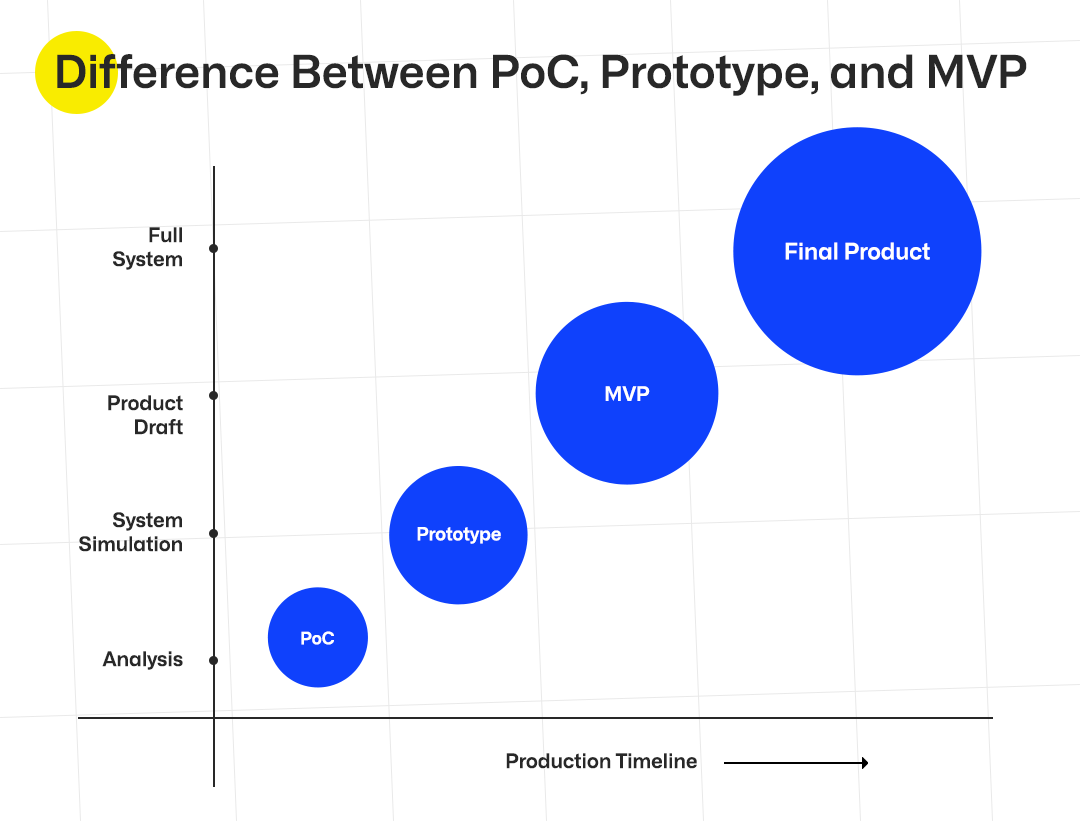
So far, we have provided in-depth information on PoC, Prototype, and MVP. Let us tell you that when it comes to choosing an approach for software engineering, most project leaders wonder whether to choose PoC, Prototype, or MVP.
However, as opposed to the popular belief, there is no scope for choosing one approach here. All three concepts have their own role in the SDLC. We therefore recommend you focus equally on these concepts and consider their role in the overall product’s success.
Summing It Up
PoC (Proof of Concept), MVP (Minimum Viable Product), and Prototype are critical pillars of software engineering. Each of these pillars has its own role in the software product’s success.
A proof of concept is essential to validate and verify the feasibility of the software. Based on this validation, a prototype can be used to take the idea further and add a visual window to the software. Lastly, an MVP is what turns the visual overview of a software concept into a well-functioning program.
It is, therefore, clear that all three of these concepts have their share in the software’s overall success. You can use this information and use these concepts to kickstart your software’s engineering journey with ease.
Looking for Bespoke Software Solutions?
Being an experienced software development company, we hold rich expertise in custom-tailoring high-end software for our clients. Whether you are looking to get validation on your software idea through a PoC, need prototyping services, or want to build an MVP, we can offer complete solutions for your requirements.
Get in touch with us today to consult your idea with our experts and leverage our wide domain expertise and high-end IT proficiency. You can email us your requirements at admin@auxanoglobalservices.com, and our experts will get back to you within 24 hours.





![How Much Does It Cost to Develop an MVP? [2023]](https://www.auxanoglobalservices.com/agsresources/wp-content/uploads/2023/05/How-Much-Does-It-Cost-to-Develop-an-MVP-2023.jpg)

